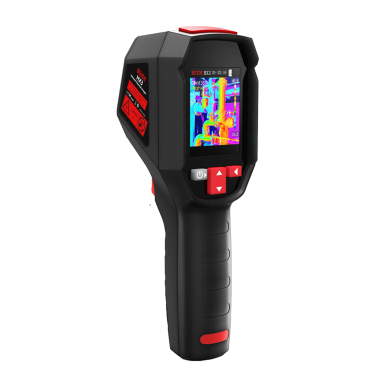Infrared Thermometer: Essential Tool for Accurate Temperature Measurement

# Infrared Thermometer: Essential Tool for Accurate Temperature Measurement
## Introduction to Infrared Thermometers
Infrared thermometers have revolutionized the way we measure temperature in various industries and everyday life. These non-contact devices provide quick, accurate readings without the need for physical contact with the object being measured. From industrial applications to medical use and home safety checks, infrared thermometers have become indispensable tools in our modern world.
## How Infrared Thermometers Work
Infrared thermometers operate on a simple yet sophisticated principle. They detect infrared energy emitted by all objects above absolute zero temperature. The device focuses this energy through a lens onto a detector, which converts it into an electrical signal. This signal is then processed and displayed as a temperature reading.
Key components of an infrared thermometer include:
– Optical system to collect infrared radiation
– Detector to convert radiation into electrical signals
– Signal processing unit
– Display unit for temperature readout
## Advantages of Using Infrared Thermometers
The popularity of infrared thermometers stems from their numerous benefits:
– Non-contact measurement: Ideal for measuring moving objects or hazardous materials
– Fast response time: Provides instant readings
– Wide temperature range: Can measure from -50°C to over 3000°C depending on model
– Safe for measuring hot, hazardous, or hard-to-reach surfaces
– Hygienic: Particularly valuable in medical and food service applications
– Durable: No moving parts that can wear out
## Common Applications
Infrared thermometers serve diverse purposes across multiple sectors:
### Industrial Applications
– Monitoring equipment temperature to prevent overheating
– Checking electrical components for hot spots
– Measuring surface temperatures in manufacturing processes
– HVAC system maintenance and troubleshooting
### Medical Use
– Measuring body temperature (especially during pandemics)
– Detecting fever in public health screenings
– Monitoring patient temperature in clinical settings
### Home and Consumer Use
– Checking food temperatures while cooking
– Monitoring refrigerator and freezer temperatures
– Identifying heat leaks in home insulation
– Measuring water temperature in pools and spas
## Choosing the Right Infrared Thermometer
When selecting an infrared thermometer, consider these factors:
– Temperature range needed for your applications
– Distance-to-spot ratio (D:S) which determines measurement area size
– Emissivity settings (ability to measure different surface types)
– Response time and accuracy requirements
– Additional features like data logging or laser pointers
– Durability and environmental conditions of use
## Proper Usage Tips
To get the most accurate readings from your infrared thermometer:
– Ensure the lens is clean and unobstructed
– Be aware of the device’s distance-to-spot ratio
– Consider the emissivity of the surface being measured
– Avoid measuring through glass or other transparent barriers
– Allow the thermometer to acclimate to extreme temperature environments
– Regularly calibrate the device according to manufacturer instructions
## Future of Infrared Thermometry
As technology advances, we can expect infrared thermometers to become even more sophisticated. Future developments may include:
– Improved accuracy and smaller measurement spots
– Integration with smart devices and IoT systems
– Enhanced data collection and analysis capabilities
– More affordable high-performance models
– Specialized versions for emerging applications
Keyword: infrared thermometer
Infrared thermometers have proven their value across countless applications, providing quick, safe, and reliable temperature measurements. Whether for professional use or personal needs, these devices offer a convenient solution for temperature monitoring in our increasingly technology-driven world.